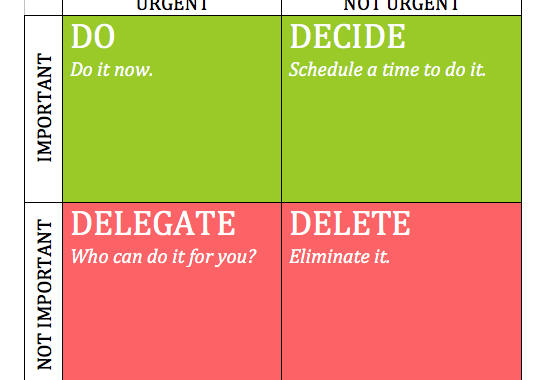In the last blog in this series, we covered how to take big projects and break them down into small tasks, so that they’re manageable. Today we’re going to talk about how to set priorities for those tasks, so that they get done.
Dwight Eisenhower, the 34th President of the United States, had a simple but effective method for prioritizing what he needed to do every day. One of his most famous tools is the Eisenhower Box. The Eisenhower Box forces you to determine whether something is urgent, important, both, or neither, and then deal with the task appropriately.
Let’s define some terms:
1. Urgent – this means it needs to get done within the next 24 to 48 hours.
2. Important – this means it has serious consequences for some outcome that matters to you (like your grade in a class, your sports eligibility, your GPA, your housing situation, your employment situation – and these are just a few examples).
3. Both – It has to be done in the next 24 to 48 hours, and it has serious consequences if it isn’t done.
4. Neither – it can wait, or perhaps it doesn’t need to be done at all.
James Clear (at jamesclear.com) organizes his Eisenhower Box this way.
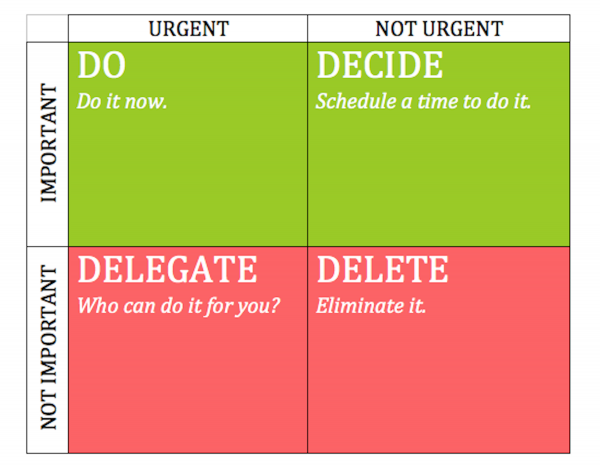
Two Questions
The Eisenhower Box allows you to ask two important questions about all the tasks, jobs, activities and obligations that are pressing in on you, and then decide, based on the answers, what actually goes in each of these boxes.
1. Will doing this help me accomplish my goals?
For this, you need to identify the goals. Look at each thing on your to-do list, and ask yourself: Will doing this activity, task, or job help you achieve a goal that you need to achieve?
2. Do I actually need to be doing this (does it have to be me who does it)?
If you’re a college student and it’s a class assignment, the answer to this is probably yes. But if it’s a trip to the store, you might not need to be the one who does it.
– If it has to be you, and it has to be done in the next 48 hours, it goes in the “DO” box.
– If it has to be you, and it has to be done, but not in the next 48 hours, it goes in the “DECIDE” box.
– If it doesn’t have to be you, and it has to be done in the next 48 hours, it goes in the “DELEGATE” box.
– If it doesn’t have to be you, and it has no real consequences for any of your goals, it goes in the “DELETE” box.
Using the Eisenhower Box
Let’s take the to-do list we created earlier, and do some prioritizing with the Eisenhower Box.
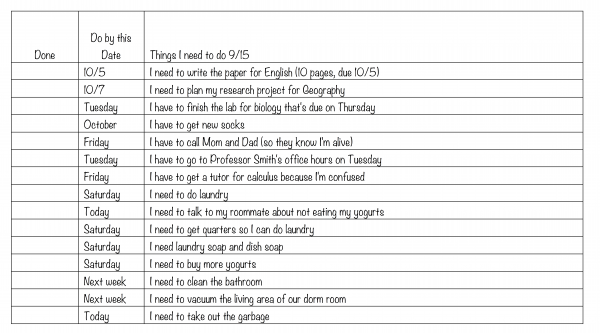
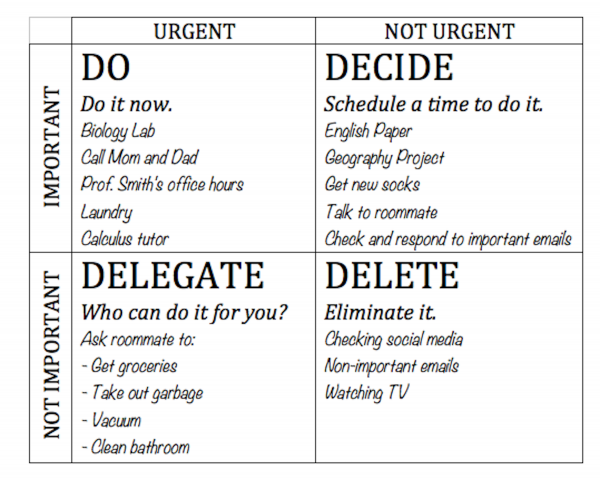
Notice that you now know what’s really important and urgent, what needs to get planned out and scheduled, and what you can ask other people to do. If you’ve been the grocery-getter and chore-performer for the last six weeks, maybe it’s time for your roomie to pull their weight – delegate those tasks to them for a week or two. And notice how much time you’re spending on things that aren’t helping you achieve your goals – and delete them.
One of the great things about the Eisenhower Box is that you can use it for the entire semester, or for a single day. The example above is for a period of about three weeks, but you could also create an Eisenhower Box for a single day.
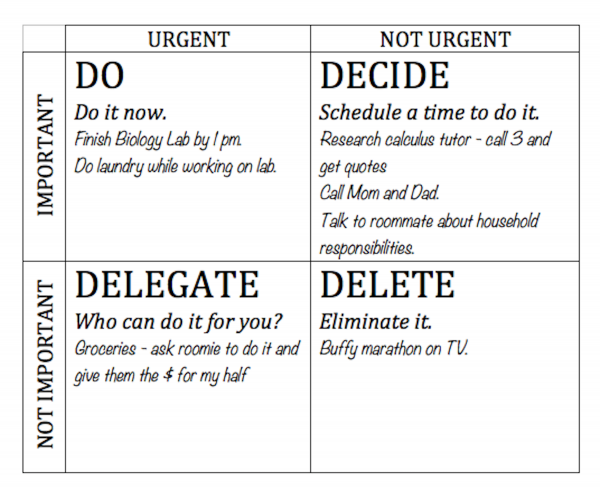
You have a complete list of tasks! Now it’s time to put them all in your planner and on your wall calendar. We’ll cover that in the final blog in this series.
Meantime, tell me what you think! You can email me or leave a comment below – and I look forward to hearing from you!

